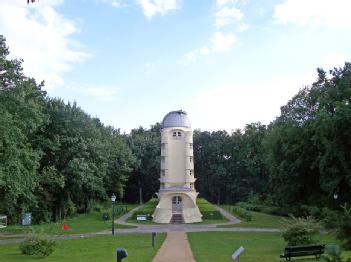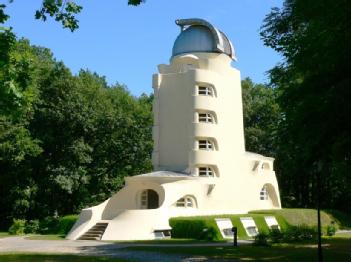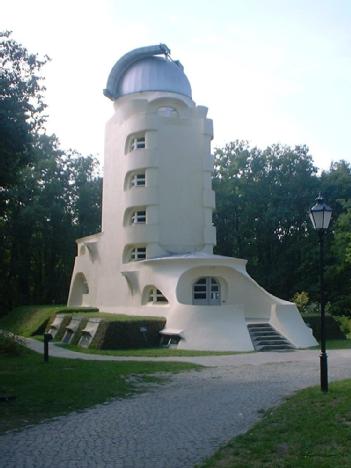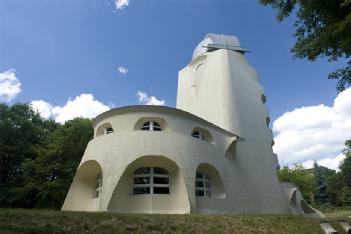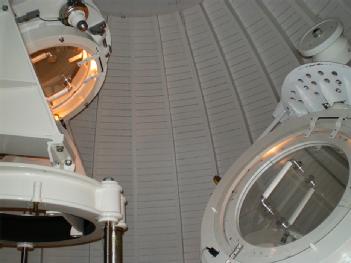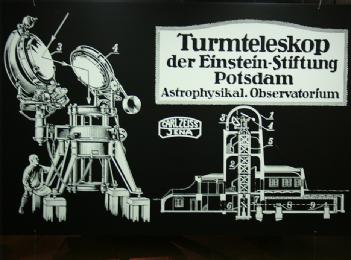
Sonnenobservatorium Einsteinturm |
14473 Potsdam, Allemagne (Brandenburg) |
|
| Adresse |
im „Wissenschaftspark Albert Einstein“
Telegrafenberg |
| Surface d'exposition | - inconnue pour le moment |
Astronomy
- Architecture
- Optique
|
Heures d'ouverture
|
Der "Wissenschaftspark Albert Einstein" ist tagsüber für Besucher geöffnet, Gäste müssen sich am Eingang anmelden.
Der Besuch des Inneren ist nur im Winterhalbjahr und nur im Rahmen von Führungen möglich. Eine Anmeldung für alle Urania-Veranstaltungen ist daher unbedingt erforderlich! |
||||||||
|
Situation de 10/2020
|
We don't know the fees. Nous ne connaissons pas les tarifs. |
||||||||
| Contact |
|
||||||||
| Page web | www.aip.de/de/forschung/forschungsschwerpunkt-kmf/cosmic-magnetic-fields/sonnenphysik/optische-sonnenphysik/einsteinturm | ||||||||
| Localisation / directions |
Potsdam befindet sich südwestlich von Berlin, an das es direkt angrenzt, am Mittellauf der Havel in einer Wald- und Seenlandschaft. Der Telegrafenberg (ältere Schreibweise Telegraphenberg) ist eine 94 Meter hohe Erhebung im Südwesten Potsdams, die zum Saarmunder Endmoränenbogen gehört. Der Wissenschaftspark Albert Einstein befindet sich mit weiteren Forschungseinrichtungen auf dem Telegrafenberg in Potsdam. |
| Description | Wikipedia: Equipment and initial research focus In tower telescopes a coelostat (a system with two deflecting mirrors, pronounced "seelostat") at the top of a vertical construction directs light down to an objective. The actual lens system is rigidly integrated into the construction. The mirrors at the top are movable and only these small lightweight instrument components are needed to track the sun. Because of the vertical arrangement, air turbulence near the ground has virtually no effect. In the Einstein Tower the construction containing the optics consists of two wooden platforms, each six m high, placed one above the other. The telescope has a lens objective of 60 cm diameter and focal length of 14 m. Rooms for observations and measurements are located at the base of the tower. In Potsdam they are arranged horizontally. Another rotating mirror directs the sunlight to the spectrograph lab located in the basement behind an earthen wall on the southern side of the tower. It is about 14 m long and thermally insulated. Here is where the light is split up into its spectral components and analyzed. This design of a horizontal laboratory wing led to the elongated profile of the entire facility. Present work The characteristics and behavior of magnetic fields provide the key to understanding solar activity and are at the focus of work at the Einstein Tower. The solar magnetic field can be measured with the help of a double spectrograph and two photoelectric polarization analyzers. Measurements in the photosphere, the visible light realm, permit conclusions about the situation at higher altitude levels. The Potsdam astronomers participate in the operation of an observatory on Tenerife. Instruments to be used there are first developed and tested at the Einstein Tower. The Einstein Tower also plays an important role in training students. |
[dsp_museum_detail.cfm]
| Mentions légales | Plus d'informations |
 urania-potsdam.de
urania-potsdam.de 